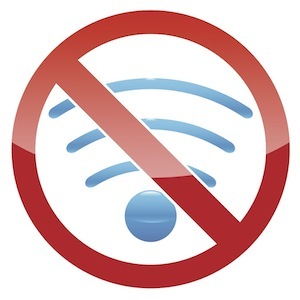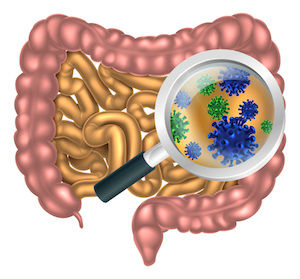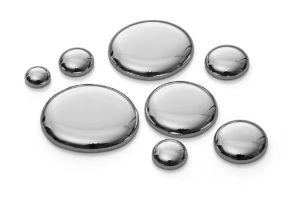Parents sue school for son's illness caused by Wi-Fi electro

A central Massachusetts boarding school is being sued by parents who claim their 12-year-old son has fallen ill due to the school's unusually strong Wi-Fi signalhttp://wifi.fetch.news/.
According to the parents, their son (referred to publicly as "G") has been diagnosed with Electromagnetic Hypersensitivity Syndrome (EHS). He began suffering headaches, nausea and nosebleeds shortly after the Fay School in Southboro upgraded to a stronger Wi-Fi signal in 2013. They are now asking the court to compel the school to either turn down its wireless signal or switch to a completely wired (Ethernet cable) Internet system, in addition to $250,000 in damages.
Mysterious but real condition
While some doctors deny the existence of EHS, the World Health Organization (WHO) categorizes it as a real health condition, although it warns that it may be caused by a variety of other factors.
EHS "is not a medical diagnosis, nor is it clear that it represents a single medical problem," the WHO says.
According to a letter sent to Fay School by Dr. Jeanne Hubbuch, who diagnosed G, "It is known that exposure to WIFI can have cellular effects. The complete extent of these effects on people is still unknown. But it is clear that children and pregnant women are at the highest risk. This is due to the brain tissue being more absorbent, their skulls are thinner and their relative size is small."
She noted that because everyone's body is different, some people are more sensitive to electromagnetic signals than others.
According to the family's lawyer, John J.E. Markham, II, G's "ability to do well in class" has suffered due to his EHS. It is unclear whether remaining in the school places him at risk of any long-term health consequences.
School tries to dodge responsibility
According to G's family, the Wi-Fi system at Fay School "emits substantially greater radiofrequency/microwave emissions than ... more low-grade systems used in most homes." When G first began suffering symptoms of EHS, his parents asked to meet with representatives of Fay School to come up with a plan to accommodate his health needs. They say the school repeatedly refused any meetings and threatened to kick G out of school if his parents talked to anyone else about his Wi-Fi-related health problems.
School officials then referred G to another doctor, who spoke with the boy for 10 minutes, did not perform any tests, then claimed that he did not believe in EHS and sent G home.
"Yet he made no alternate diagnosis," the lawsuit notes.
In response to the lawsuit, Fay School hired a company to analyze their Wi-Fi signal. The company declared that the signal was "less than one ten-thousandth (1/10,000th)" of federal and state maximum exposure limits.
The school's defense did not compare the strength of the signal to those typically found in homes or address the fact that some people may have heightened sensitivity.
According to the lawsuit, the school's failure to make accommodations for G violates its policy handbook, as well as the Americans with Disabilities Act.
"We're trying to work with the school," said Markham. "We're still hoping to reach a resolution that will allow him to safely be in those classrooms."
Because Wi-Fi signals and cellular phones operate by means of non-ionizing radiation, U.S. scientific consensus has mostly considered those signals harmless. Studies, however, continue to emerge showing that non-ionizing radiation is also capable of producing negative health effects, simply through different mechanisms.
Growing evidence of health risks has moved many European governments to remove Wi-Fi from schools and libraries.
Sources:
http://boston.cbslocal.com/2015/08/25/wifi-southboro-fay-school-sick/
http://www.telegram.com/article/20150824/NEWS/150829606
http://www.dreddyclinic.com/forum/viewtopic.php?f=68&t=23305
http://www.dreddyclinic.com/forum/viewtopic.php?f=94&t=30960
http://dreddyclinic.com/forum/viewtopic.php?f=11&t=32017
Read more
5 Signs You’re Experiencing Selenium Deficiency
Antioxidants have an enormously positive impact on our health but rarely does anyone specifically cite the significance of selenium, a powerful nutrient that double up as an antioxidant. Its positive impact on the immune system, brain health, and reproductive system is something that doesn’t get the attention it deserves.

Neither do the negative health impacts of selenium deficiency. Eating foods grown in selenium-poor soil or even digestive and intestinal ailments, such as celiac diseasehttp://www.dreddyclinic.com/forum/viewtopic.php?f=123&t=33594, can contribute to selenium deficiency. Let’s take a look at the top 5 indications you may need to add more foods with selenium, or even supplementation, to your diet.


1. Foggy Memory
Feeling spacey? A cloudy mind coupled with short-term (and even long-term) memory issues could be a sign of a selenium deficiency. While many people are ready to pass off memory problems as a natural part of aging http://www.dreddyclinic.com/forum/viewtopic.php?f=34&t=32005, that may not be the case. A lack of selenium has been shown to interfere with cognitive function http://www.dreddyclinic.com/forum/viewtopic.php?f=13&t=33886. This isn’t limited to memory; analytical thinking skills and concentration can also be affected. [1]
2. Fatigue
Selenium is necessary for converting the T4 thyroid hormone (thyroxine) into the active hormone T3 (triiodothyronine). If these hormones are off, the risk for developing hypothyroidism http://www.dreddyclinic.com/findinformation/hh/hypothyroidism.php — a condition associated with lethargy, depressionhttp://dreddyclinic.com/forum/viewtopic.php?f=109&t=33595, and uncontrolled weight gain — increases. While iodine is also necessary for proper thyroid healthhttp://www.dreddyclinic.com/forum/viewtopic.php?f=28&t=33533, a deficiency in selenium also contributes to protecting the thyroid and regulating important hormonal function. [2]
3. Chronic Cold or Flu
Selenium supports the immune system and contributes to your body’s natural defenses against the cold, flu, and other immune-compromised conditions. Hypothyroidismhttp://dreddyclinic.com/forum/viewtopic.php?f=28&t=33674, a condition that can be influenced by selenium deficiency, negatively interferes with the immune system’s response to invading germs. The immune system also requires cells to communicate with each other when dealing with germs and bacteria. Selenium, as an antioxidanthttp://www.dreddyclinic.com/forum/viewtopic.php?f=21&t=32801, supports this communication. [3]
4. Infertility
Infertility can stem from many causes and willy-nilly ascribing fertility http://www.dreddyclinic.com/forum/viewtopic.php?f=13&t=33639 issues to selenium deficiency isn’t the best protocol. However, selenium does affect sperm quality and motility. In fact, the combination of selenium and vitamin E seem to work synergistically to promote male fertility. [4]


5. Slow Wound Healing
Got a cut or bruise that just doesn’t heal as quickly as it should? Maybe you’re not getting enough selenium. Part of the benefit of selenium being an antioxidant is that it helps cell tissue repair. When wounds don’t heal, or heal very slowly, it’s worth examining your selenium status as research suggests that selenium may help wounds heal faster. [5]
Getting Enough Selenium
While one or more of the above problems may indicate a selenium deficiency, it should be noted that not everyone who experiences these issues is experiencing selenium deficiency. Regardless, it’s something to keep in mind. If you have any of these problems, double check your nutritional intake and consider adding more foods rich in selenium http://www.dreddyclinic.com/forum/viewtopic.php?f=21&t=33532 to your diet; supplementation may also be something to consider.
Are you conscious and aware of your own selenium intake? What prompted that awareness? Please leave a comment and share your experience!
by Dr. Edward Group DC, NP, DACBN, DCBCN, DABFM
References:
1. Pillai R, Uyehara-Lock JH, Bellinger FP. Selenium and selenoprotein function in brain disorders http://www.ncbi.nlm.nih.gov/pubmed/24668686. IUBMB Life. 2014 March 25. doi: 10.1002/iub.1262.
2. Rodrigo Moreno-Reyes, M.D., Carl Suetens, M.D., Françoise Mathieu, B.S.P.T., Fraçoise Begaux, B.S.P.T., Dun Zhu, M.D., Maria T. Rivera, Ph.D., Marleen Boelaert, M.D., Jean Nève, Ph.D., Noémi Perlmutter, M.D., and Jean Vanderpas, M.D., Ph.D. Kashin-Beck Osteoarthropathy in Rural Tibet in Relation to Selenium and Iodine Statushttp://www.nejm.org/doi/full/10.1056/NEJM199810153391604. New England Journal of Medicine. 1998; 339:1112-1120. DOI: 10.1056/NEJM199810153391604
3. John R. Arthur, Roderick C. McKenzie, and Geoffrey J. Beckett. Selenium in the Immune System http://jn.nutrition.org/content/133/5/1457S.full. The Journal of Nutrition. May 1, 2003. vol. 133 no. 5 14575-14595.
4. Mohammad K Moslemi and Samaneh Tavanbakhsh. Selenium-vitamin E supplementation in infertile men: effects on semen parameters and pregnancy ratehttp://www.ncbi.nlm.nih.gov/pmc/articles/PMC3048346/. International Journal of General Medicine. 2011; 4: 99-104.
5. Gumustekin K, Seven B, Karabulut N, Aktas O, Gursan N, Aslan S, Keles M, Varoglu E, Dane S. Effects of sleep deprivation, nicotine, and selenium on wound healing in ratshttp://www.ncbi.nlm.nih.gov/pubmed/15636354. International Journal of Neuroscience. 2004 November;114(11):1433-42.
Read more
How to Choose the Best Probiotic
It’s no secret that probiotics support a number of health benefits http://www.dreddyclinic.com/forum/viewtopic.php?f=21&t=32283. They support digestion, boost the immune system, and offer a host of other positive offerings. In fact, a good probiotic is one of my must-have items. But, what makes a probiotic supplement a good one? Here we’ll cover some of the things you should watch for when choosing a probiotic.

Choosing the Best Probiotic Supplement
Finding a high-quality probiotic isn’t hard but does require you to read the label and know what it means. Here are some of the top parameters you should check for the next time you’re deciding on a probiotic.
How Many Strains Does it Have?
A probiotic is just another name for a strain of bacteria; and different strains of bacteria offer different benefits. A lot of supplements offer just one strain, some offer several. When you start looking into individual strains, you can quickly find yourself up to your neck in research. This isn’t bad but can be a bit intimidating. If you want to simplify the processes, look for a product that has at least three strains. Multiple strains will offer benefits specific to each strain and improves the ability of bacteria to colonize00 your digestive tract. [1]
Does it Contain Prebiotics?
Multiple strains and billions of live active cultures is a great start, but also consider that probiotics need “food” to multiply and thrive. This food is called “prebiotics” and generally comes from fiber. Inulin, chicory root, and gum arabic http://dreddyclinic.com/forum/viewtopic.php?f=9&t=32361 are common examples of prebiotics. A great probiotic supplement will also contain prebiotics from any of these sources.
Is it Vegan Friendly?
This is more an item of personal preference than a hard requirement, but I included it on the list because it’s important to me. Many supplements, including probiotics, use gelatin capsules. Personally, I prefer vegetarian capsules. Also, while I won’t go so far as to say it’s a law, in general, I find supplements that are specifically vegan friendly to be produced with more care than those that are not.
The Probiotic Supplement I Recommend
Earlier this year, we introduced a new probiotic supplement called FloraTrex™ http://www.dreddyclinic.com/forum/viewtopic.php?f=9&t=34639. It offers more than a dozen of the best probiotic strains available for a complete spectrum of benefits. It’s also vegan friendly, contains probiotics, and has gotten incredible feedback from the people who’ve tried it. I’ve been really happy with the results and I’m confident you will be too.
Is there something else you look for when you’re shopping for a probiotic supplement? Add your suggestions for others to read in the comments!
by Dr. Edward Group DC, NP, DACBN, DCBCN, DABFM
References:
1. Chapman CM, Gibson GR, Rowland I. In vitro evaluation of single- and multi-strain probiotics: Inter-species inhibition between probiotic strains, and inhibition of pathogenshttp://www.ncbi.nlm.nih.gov/pubmed/22677262. Anaerobe. 2012 Aug;18(4):405-13. doi: 10.1016/j.anaerobe.2012.05.004.
Read more
What is Argyria?
Argyria is a discoloration of the skin, generally characterized by a bluing of the skin’s pigment. This rare, biologically benign condition proves the old adage that quality is much more important than quantity. Argyria occurs in response to the overconsumption of impure colloidal silver particles. Argyria is also an industrial concern that has been historically observed in workers consistently exposed to silver dust over a period of months and even years.

What Causes Argyria?
Silver naturally forms compounds, especially when exposed to ultraviolet light http://www.dreddyclinic.com/forum/viewtopic.php?f=33&t=33211 (sunlight). If a silver mixture uses proteins or salts to suspend silver particles, the silver will pass into tissue, including skin tissue. [1] In the skin, silver is unable to escape and reacts with ultraviolet light in a manner similar to the photographic development process causing the skin to turn blue, or bluish-gray. Simply put, argyria will make you look like a Smurf.
Symptoms of Argyria
Before the skin turns blue, the body does give a subtle warning. The body disposes of silver through the kidneys via urine, sweat, and through the hair and nails. Silver gets stored in the nail beds prior to release. If the skin under the nail begins to show a blue color, it may indicate overconsumption of silver.


Regular consumption of low-quality silver also appears to reduce selenium levels. Selenium is essential for thyroid hormones, which directly affect mood, hormonal balance, and energy levels. Fortunately, argyria does not appear to affect any of the body’s function, only a person’s cosmetic appearance. Argyria is basically irreversible although some laser surgeries have reported limited success in reducing the symptoms.
Is Argyria Permanent?
While steps can be taken to reduce the bluing effects of argyria, no known remedies exist to completely eliminate it. Some have reported success reducing the blue tint by taking selenium and vitamins A, E, and C. These vitamins and minerals reduce the size of the silver compounds in the skin so they no longer absorb light, but they do not appear to remove the seed particles lodged in the skin.
Reduce Your Risk of Argyria
The simplest way to reduce, if not eliminate, your risk of argyria is to avoid low quality colloidal silver and only consume a high quality supplement, particularly one that contains very small silver compounds in the range of 0.0008 – 0.005 microns; or silver particles more than a 1000 times smaller than a blood cell. What does all that mean? It means you should avoid the low-tech home brew kits as they produce unstable solutions with silver particles that are too large. In my opinion, only colloidal silver produced using high voltage alternating current technology, like Silver Fuzion http://www.dreddyclinic.com/forum/viewtopic.php?f=11&t=30724, is acceptable.


Not All Colloidal Silver is Created Equal
Pure electro-colloidal silver produced in clean environments without additives, proteins, and stabilizers is less likely to cause argyria. Products containing silver protein, silver chloride, silver citrate, and silver nitrate, or those that do not use automatic voltage regulating technology, however, will cause argyria. These preparations contain large silver particles that can become embedded in your skin.
Watch out for preparations with silver as large as 0.1 microns. This is way too big. If you shake a bottle of colloidal silver and it foams up, this is a clear indication that the silver particles are too large. The foam generally indicates a protein additive aiding the suspension of the large silver particles. Similarly, if your silver water has sediment (particle fallout) — do not consume it. You really don’t want silver bigger than 0.005 microns.
Silver Fuzion is Unsurpassed Quality
Let’s be clear, low-quality colloidal silver preparations could leave you blue — literally. This is why it’s so important to know the quality of the colloidal silver you use. Silver Fuzion® contains 10 ppm of pure silver and is produced using a high voltage colloid generator to keep the electrical current constant. This process produces small, uniform silver particles suspended in ultra pure, triple-distilled water. Global Healing Center remains committed to providing the finest colloidal silver that is guaranteed pure, safe, and crystal clear.
References:
1. Lansdown AB. A pharmacological and toxicological profile of silver as an antimicrobial agent in medical devices http://www.ncbi.nlm.nih.gov/pubmed/21188244. Adv Pharmacol Sci. 2010;2010:910686. doi: 10.1155/2010/910686.
by Dr. Edward Group DC, NP, DACBN, DCBCN, DABFM
Read more
An unplanned diet wastes the effort of a hard workout

An understanding of dietary sources of nutrients is integral to organizing and implementing a dietary plan. For many sports enthusiasts, whose motivation may be bulk strength and aerobic fitness rather than the elusive balance of health, diet may not be a pressing concern. In a televised interview, NHL legend Wayne Gretzky, known as "The Great One", told reporters that his key to playing a strong game of hockey was to consume four foot-long hotdogs right before each game. Athletics, while an opportunity for a quicker shortcut, aren't necessarily in the pursuit of health.
Ready, aim, eat!
The sports nutrition section of the large chain grocery stores stocks the standard display of protein powders for building muscle. While most sports have specific recommendations about what choices to provide the most support for the specific activity, many people are being misguided into overloading their diets with the magic food or supplement of choice, forgetting that the rest of the body relies on a wide variety of nutrients for daily functioning.
The body preforms differently during different types of activities, rerouting energy and micronutrients to cope with the different conditions associated with muscular endurance, cardio, or high energy sports. "Sports drinks", for example, are specifically targeting electrolyte loss, that occurs in high energy sports like cycling and running.
Omega-3 and iron for the long burn
Participants in endurance sporting activities tend to fill up on carbohydrates before exercising or competing, believing that carbs will provide them with a longer energy store than fats. Backed by the understanding that fats and sugars can provide only a short hard burn, endurance athletes also miss out on the omega-3s that are found almost exclusively in high-fat sources. Omega-3 fatty acids are particularly useful in the reduction of joint and connective tissue inflammation.
It is also very important for people training in high energy sports to have a diet high in vitamin C, which is necessary for the absorption of dietary iron. Iron is vital to the body's ability to move oxygen through the body via the bloodstream.
Two keys to unlock your potential
This would suggest that while in addition to the daily regiment of health needs, an extra shot of orange juice right before a workout could go a long way to mobilizing the prepared resources. Lower levels of oxygen in the blood will make a noticeable impact on performance, strength, and response time. It will also increase recovery time.
For both omega-3s and iron, vegans and vegetarians are at a disadvantage, as typical recommended sources tend to list types of meat. Remember: flax, chia, and hemp seeds, as well as avocados, are excellent sources of the omega oils, but it is often recommended these healthy lipids should be included with every meal.
Sources for this article include:
http://www.savvyvegetarian.com/articles/omega-3-vegetarians-vegans.php
http://www.sciencedirect.com/science/article/pii/0197007087900027
http://latino.foxnews.com/latino/health/2012/05/03/marta-montenegro-nutrients-that-sports-aficionados-miss-in-their-diet/
http://www.tandfonline.com/doi/abs/10.1080/02640419108729869
About the author:
Raw Michelle is a natural health blogger and researcher, sharing her passions with others, using the Internet as her medium. She discusses topics in a straight forward way in hopes to help people from all walks of life achieve optimal health and well-being. She has authored and published hundreds of articles on topics such as the raw food diet and green living in general. In 2010, Michelle created http://RawFoodHealthWatch.com, to share with people her approach to the raw food diet and detoxification.
Read more
Deaths and mutations spike around Fukushima; no safety threshold for radioactive cesium exposure

Plants in the area around Fukushima, Japan are widely contaminated with radioactive cesium, which is producing mutation and death in local butterflies, according to a study conducted by researchers from the University of the Ryukyus, Okinawa and published in the journal Scientific Reports.
The butterflies were found to experience severe negative effects at all detectable radiation levels, even very low ones.
"We conclude that the risk of ingesting a polluted diet is realistic, at least for this butterfly, and likely for certain other organisms living in the polluted area," the researchers wrote.
Insects hard hit
The researchers note that although the 2011 meltdown of the Fukushima Daiichi Nuclear Power Plant released "a massive amount of radioactive materials ... into the environment," few studies have looked at the biological effects of this disaster. Researchers have, however, measured elevated radiation levels in the polluted area, and have chronicled the accumulation of radioactive material in both wild and domestic plant and animal life in the region.
Studies have also suggested that insects may be particularly hard-hit by the increased radiation. One study found an increase in morphological abnormalities (physical deformities) in gall-forming aphids. Another found that insect abundance has decreased in the affected region, particularly butterfly abundance.
In order to test the effects of the radioactivity on local insects, researchers collected pale grass blue butterfly (Zizeeria maha) larvae from Okinawa, which is distant from Fukushima and "likely the least polluted locality in Japan." They then fed the larvae on plant leaves collected from one of five different regions: Hirono, Fukushima, Iitate-flatland, Iitate-montane and Ube. Because the five regions are all at different distances from Fukushima, the researchers expected that plants collected there would have differing levels of radioactive cesium, which tests confirmed. The plants from Ube contained essentially no radioactivity, and were used as a control group.
The pale grass blue butterfly is a species commonly found in many regions of Japan, including near Fukushima.
The researchers found that caterpillars that ate radioactive leaves pupated into mutated butterflies that did not live as long, compared with caterpillars that ate non-radioactive leaves. These mutations and increased mortality were seen even in butterflies that consumed only very small doses of radioactive cesium.
"There seemed to be no threshold level below which no biological response could be detected," the researchers wrote.
Small dose increases lead to large jump in mutation and death
The more radioactive cesium that the larvae consumed, the greater the rates of mutation and early death. Indeed, rates of both problems increased more rapidly than dosage (a non-linear relationship).
The study was not designed to test for similar effects on human beings, but the researchers warn that there is still enough evidence to be concerned. Two of the locations that radioactive leaves were collected from - Fukushima City and Hirono Town - currently have people living in them. In addition, the study findings were consistent with radioactivity levels found in plants following the 1986 Chernobyl disaster.
The Chernobyl meltdown led to a sharp rise in infant deaths in locations as far from the plant as Western Germany and the United States. A recent study, published in the journal Radiation Research, linked a sharp jump in thyroid cancer rates in the years following that disaster directly to the amount of radioactive iodine that children were exposed to in the months immediately after the meltdown and explosion.
The triple meltdown at Fukushima is now considered by many scientists to be the worst civilian nuclear disaster the world has ever seen, surpassing even Chernobyl.
Both sites have yet to be fully cleaned up or sealed off.
Sources for this article include:
http://www.smithsonianmag.com/smart-news/caterpillars-eat-even-small-amount-radioactive-plant-material-might-develop-abnormal-butterflies-die-young-180951466/?no-ist
http://www.nature.com/srep/2014/140515/srep04946/pdf/srep04946.pdf
http://www.dreddyclinic.com/forum/viewtopic.php?f=73&t=31598
http://www.dreddyclinic.com/forum/viewtopic.php?f=117&t=33678
http://dreddyclinic.com/forum/viewtopic.php?f=18&t=31449
Read more









